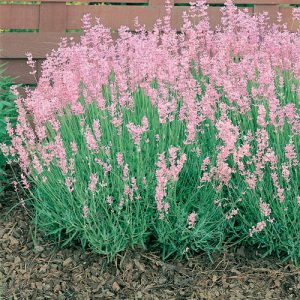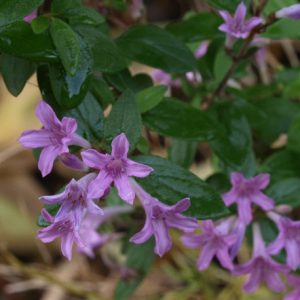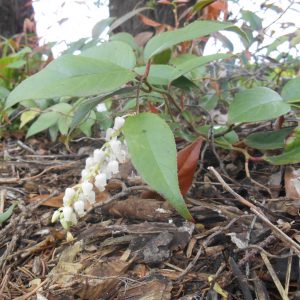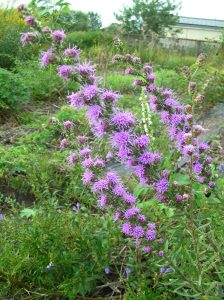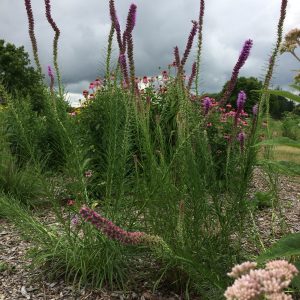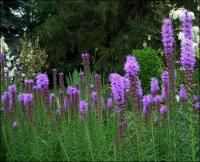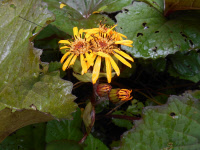Shop
Showing 457–464 of 788 results
-
Lavandula angustifolia var. rosea syn. L. spica var. rosea Lavender Z 4
Pink colored lavender flowers, and still fragrant.
ARCHIVED
Note: This is a plant not currently for sale. This is an archive page preserved for informational use.
Pink colored lavender flowers, and still fragrant. We especially like this for its compact habit.
Size: 12” x 12”
Care: sun in moist well-drained soilPink variety in gardens by 1800.
-
Leptodermis oblonga Dwarf lilac Z 5-8
fragrant lavender, lilac-like trumpets blooming in June – October.
Low mounding shrub with fragrant lavender, lilac-like trumpets blooming in June – October. Leaves slow to leaf-out in spring but then blooms its heart out.
Size: 12-18” x 18-24” spreads by suckers
Care: sun to part shade in moist well-drained to well-drained soil
Native: No. & W. China & Himalayas.
Wildlife Value: Attracts hummingbirdsLeptodermis means “thin skin” and oblonga refers to the oblong leaves.
Introduced by E.H. Wilson in 1905. -
Leucanthemum x superbum syn. Chrysanthemum x superbum Shasta Daisy
June – July classic white daisy hybridized by Luther Burbank.
June – July classic white daisy hybridized by Luther Burbank.
Size: 36” x 24”
Care: Sun - part shade in moist well-drained moderately fertile soilHybridized by Luther Burbank, the “plant wizard” during 17 years of intermittent work from 1884 – 1901. Quadruple hybrid made from the oxeye daisy, 2 European daisies and 1 Japanese daisy. Burbank introduced more than 800 plants. Named “Shasta” because the white petals reminded Burbank of the snow on top of California’s Mount Shasta.
-
Leucothoë fontanesia Fetterbush, Doghobble Z 5-8 POISON
Suckering evergreen shrub with graceful, arching branches, in May-June fragrant, dangling clusters of waxy, milky white, urn shaped flowers. Burgundy-purple foliage in fall.
ARCHIVED
Note: This is a plant not currently for sale. This is an archive page preserved for informational use.
Suckering evergreen shrub with graceful, arching branches, in May-June fragrant, dangling clusters of waxy, milky white, urn shaped flowers. Burgundy-purple foliage in fall.
Size: 3-5’ x3-5’ slow
Care: part shade to shade, moist acidic soil. Protect from winter wind
Native: Mass. To Georgia.
Wildlife Value: attracts bees and butterflies. Deer resistantLeucothoë was a sea goddess in Greek mythology. Fontanesia honors French botanist René Louiches Desfontaines (1750-1833). Named Doghobble because the branches can grow into impenetrable thickets to hinder (hobble) dogs & horses. This species collected before 1788.
-
Liatris aspera Rough blazing star Z 4-9
Feathery purple buttons along tall spikes August-October
OUT OF STOCK
Feathery purple buttons along tall spike in late summer: August-October
Size: 24”-30” x 12”-18”
Care: Sun in well-drained soil
Native: So. Canada, much of eastern 3/4th of U.S., Wisconsin Native
Wildlife Value: attract butterflies (favorite nectar for Monarchs and Buckeyes) & hummingbirds.Aspera is Latin meaning rough. 1st collected by Frenchman André Michaux (1746-1802) who spent 11 years in America collecting hundreds of new plants.
-
Liatris pycnostachya Prairie blazing star Z 3-9
Tall, erect, purplish- pink spike in August-September
OUT OF STOCK
Tall, erect, purplish- pink spike in August-September
Size: 4’ x 1-2’
Care: well-drained soil in full sun
Native: central & SE US
Wildlife Value: deer resistant, attracts birds, butterflies, and beesCollected by French planthunter Andre Michaux in 1795 on the prairies of Illinois. About 9 years later collected on the Lewis & Clark Expedition in South Dakota September 1804
-
Liatris spicata Blazing star, Gayfeather, Button snakeroot Z 3-8
Rosy purple spikes in July and August, a flower arranger’s dream
Rosy purple spikes in July and August, a flower arranger’s dream
Size: 2-3' x 18"
Care: Full sun in moist to well-drained soil.
Native: Eastern and southern U. S., Wisconsin native
Wildlife Value: favorite nectar source for Buckeye butterflies & host for caterpillars of Painted lady, Fritillaries, Skippers, Sulphurs, Coppers & Checkerspot butterflies.Native Americans used roots medicinally for backaches, colic, dropsy and to strengthen a weak heart. The Dakota recognized L. spicata as an indication “when the flower is blue-red that corn is good to eat.” Nicollet Diary, August 13, 1838. The dried root reputedly repelled moths from stored clothes. First collected by English naturalist Mark Catesby (1683-1749) and cultivated since 1732. Grown at America’s 1st botanic garden, Elgin Botanic Garden 1811.
-
Ligularia dentata In China called chi ye tuo wu, Leopard plant, Summer ragwort Z 3-8
Its leaves are as ornamental as its blooms – leaves are large, leathery, round with jagged margins and prominent veins; orange-yellow daisies, bloom in mid-summer
Its leaves are as ornamental as its blooms – leaves are large, leathery, round with jagged margins and prominent veins; orange-yellow daisies, bloom in mid-summer
Size: 3-4’ x 2-3’
Care: shade to part shade in moist to moist well-drained soil
Native: China & Honsu in JapanDentata refers to the jagged leaf edges. Collected and introduced to Europe by Carl Peter von Thunberg (1743-1828), student of Linnaeus at Uppsala University in Sweden. He made three trips to the Cape of Good Hope 1772-1775 where he collected about 1000 new species, Java and Ceylon (Sri Lanka) 1777 and 15 months in Japan (1775-1777) where he befriended local doctors who gave him hundreds of plants new to Western horticulture. He succeeded Linnaeus as professor of medicine and botany at Uppsala. Knighted by Swedish King Gustav.

